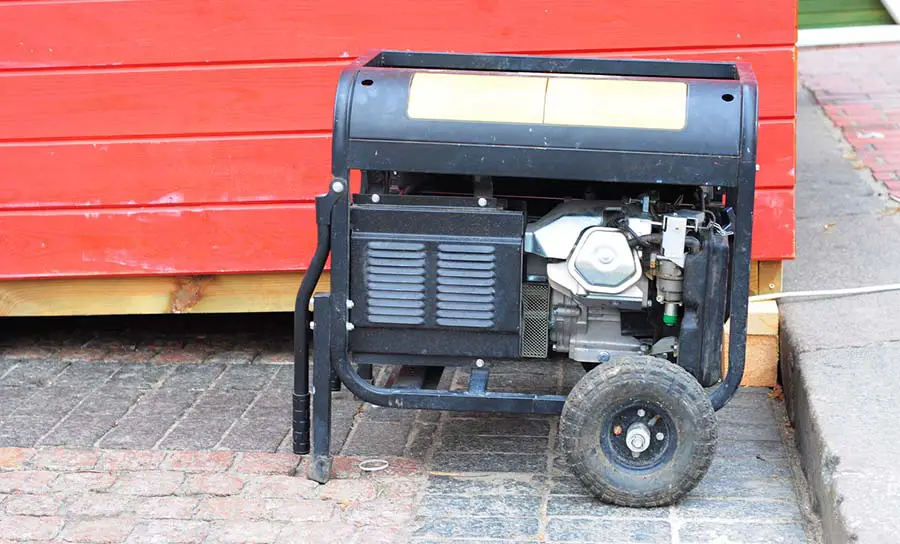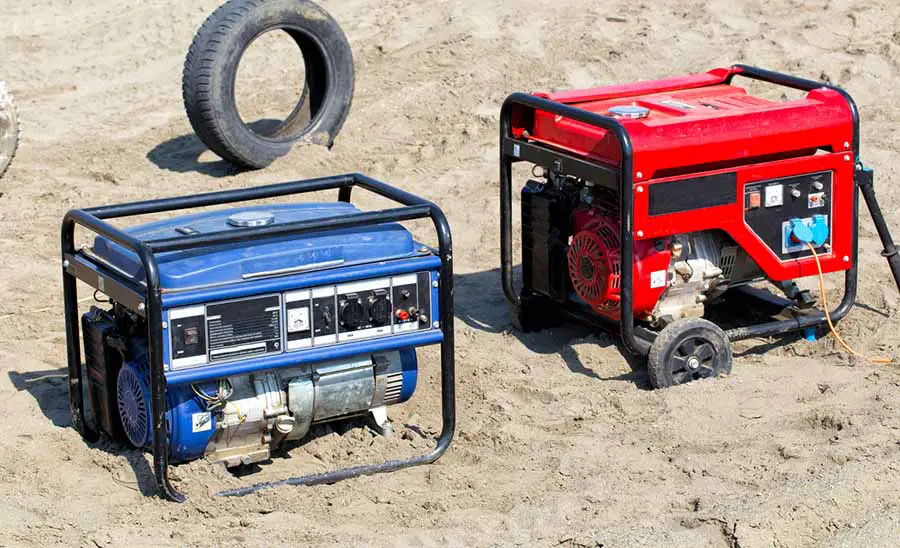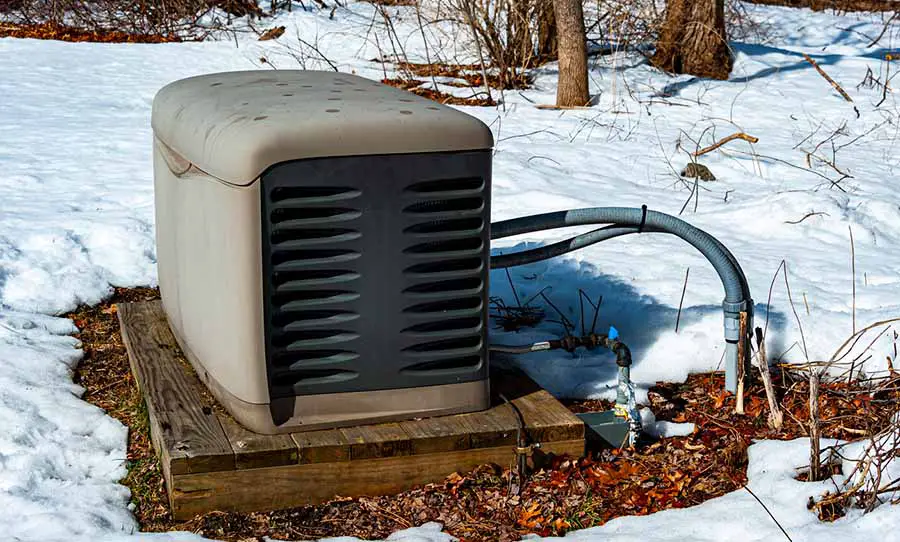
One of the crucial tasks during maintenance is to run the generator for a certain amount of time. Keeping your generator maintained and serviced is an essential task that you should perform monthly to ensure that your generator runs as expected during a power outage. This is how long you should run a generator for maintenance.
You should run most generators for 20 minutes at least once a month. During the last few minutes, disable the fuel line to allow the engine to use all the fuel in the system. Running your generator ensures internal parts remain lubricated, the carburetor is functional, and the battery stays charged.
Depending on the type of generator, maintenance procedures and running times may differ. Read on to find out more information regarding generator maintenance tips and tricks, different kinds of generators, and why it is essential to perform maintenance on generators.
Generator Types
Below is a quick look at the different types of generators you might encounter.
Different Generator Uses and Design
You can put generators into two main types, namely, standby and portable generators. Both standby and portable generators use various fuel sources depending on size, function, and power output.
As mentioned before, all generators need to be regularly maintained or serviced, regardless of generator type or fuel source. While the technical procedure for this may differ for each type of generator, the basics remain the same.
Different Types of Generator Fuel
Most people who buy generators opt for fossil fuel or natural gas generators because of how easy and affordable it is to find those fuels. Unfortunately, fossil fuel-powered generators produce a lot of carbon monoxide and can be very bad for the environment.
There are alternative options such as solar, hydrogen, and battery-powered alternating generators. These generators are better for the environment but can be very expensive and may not produce the same amount of electricity as fossil fuel or natural gas generators.
Portable Generators

These types of generators are the most common and most used globally. This is because they are relatively cheap, easy to find, and come in different variations. They are also portable, as the name indicates, and you can use them almost anywhere.
They generate small to medium amounts of energy depending on the fuel source, size, and power output. The most commonly bought portable generators use either gas, gasoline, batteries, or diesel as fuel sources. Because of this, maintenance or servicing might differ. However, it is still recommended that you perform a test or maintenance run at least once a month.
Performing a Service Run On a Portable Generator
Due to the large variety of different portable generators out there, we will discuss the basic steps for maintaining gasoline, diesel, alternating, and natural gas generators and how to perform a standard service run. Included will be a few tips and tricks to ensure that your generator runs smoothly.
Gasoline Portable Generators
Portable gasoline generators are some of the most widely used generators. Performing maintenance or service procedures on a portable gasoline generator is relatively easy. Begin by making sure that the generator is on a level surface so that the fuel and oil circulate through the whole engine.
Check the oil level and ensure that there is enough clean or ethanol-free gasoline in the generator before starting and running it for 20-30 minutes. Remember to drain the fuel tank or, depending on your model, let the generator run dry to ensure the gasoline does not damage or gum up the carburetor.
Diesel Portable Generators
Portable diesel generators have more or less the same maintenance procedure as gasoline-powered portable generators. They usually are bigger, more powerful and will last years, but produce more pollution and noise. Follow the same steps as for the gasoline generator but make sure that your diesel generator’s fuel tank has diesel.
In addition to the oil levels, inspect the coolant or water levels to ensure the engine does not overheat. Although diesel has a longer shelf life than gasoline, it is still recommended to drain your fuel tank before storage.
Propane Portable Generators
Portable propane generators are a little different from gasoline or diesel-powered generators. They are easier to maintain and run but have shorter operational life spans. They also do not produce as much power and can be more expensive to run during a power failure.
Before running your propane-fueled generator, inspect the coolant and oil level and ensure no obstructions, kinks, or bends are in the fuel line. See that the fuel tank is full and not leaking. Open the valve on the propane tank and activate the generator and run it while monitoring the temperature gauge. After 20 minutes, shut it down and close the propane tank valve.
Gas and Propane Hybrid Portable Generators
Dual gasoline and propane generators are a hybrid of the two generators mentioned above. This means that the generator is capable of running on both propane and gasoline or diesel. Performing a maintenance run on these machines is also a mixture of the procedures mentioned above.
First, check the fuel sources, fuel lines, air filter, oil filter, oil level, coolant, or water level and ensure that the generator is on a level surface. Start the generator and let it run for 30 minutes to allow the usage of both fuels while keeping an eye on the temperature gauge. Once done, drain the gasoline or diesel from the fuel tank and close the valve on the propane tank.
Standby Generators

Standby generators are used mainly by commercial buildings, industrial factories, and those that can afford them. On average, standby generators generate higher amounts of electricity than portable generators. They are not portable and need to be installed by professionals. They automatically activate when there is a power failure to provide your home, business, or farm with power.
As we mentioned before, standby generators come in different varieties that use different kinds of fuel sources. And as with portable generators, the maintenance differs depending on the fuel source, model, type, and size.
Performing a Service Run On a Standby Generator
Standby generators need to be maintained and serviced at least once a month. The reason behind this is because standby generators usually have more extensive fuel sources. Due to the size and volume of these fuel sources, especially in the case of fossil fuels like diesel and gasoline, the risk for fuel degradation or contamination is generally more significant.
The fuel sources are stored in larger separate containers or tanks, usually underground or built into a structure. This is to avoid fuel inadvertently seeping into the system and gumming up generator engine components.
For natural gas or propane gas-powered standby generators, monthly maintenance remains crucial because of the fuel sources’ volatility. Most companies that employ standby generators use the certified professionals who initially installed the generator to service it.
Diesel Standby Generators
Standby diesel generators run on similar principles as portable diesel generators. This means that performing maintenance runs on these types of machines follows the same steps. However, it is highly recommended to read the user’s manual for your generator to ensure proper care and safety.
As with its portable counterpart, you will need to inspect both the fuel source and fuel lines to ensure that it is not contaminated, leaking, or degraded. Next, examine the oil level and filter, coolant or water level, the air filter, and batteries. Start and run the generator for 20- 30 minutes, ensuring no alarms or warnings show on the instrument panel.
Propane or Natural Gas Standby Generators
Propane or natural gas standby generators require less maintenance, but you still need to run them at least once a month to ensure that the generator is functioning correctly.
The procedure again is more or less the same as with its portable counterpart, except if the generator is a natural gas variant, in which case it will be connected to a gas line. It is recommended to employ or hire certified professionals to inspect and maintain both natural gas and propane-powered standby generators because of the danger and volatility of the fuels involved.
Standby Generator Maintenance Schedules
The nature of standby generators makes maintenance on these machines crucial to avoid malfunctions and the users’ safety. For this reason, standby generators come with maintenance schedules created by the manufacturers that ensure proper care and upkeep of the machine.
Neglecting these schedules can be detrimental to the condition of the generator itself and potentially the business involved.
Conclusion
Although the maintenance procedures and fuel sources for the different types of generators may differ, all generators need to have regular service or maintenance runs of about 20-30 minutes. If you are unsure or unable to perform the maintenance required to service these machines, reach out to the manufacturer for expert help and advice.

